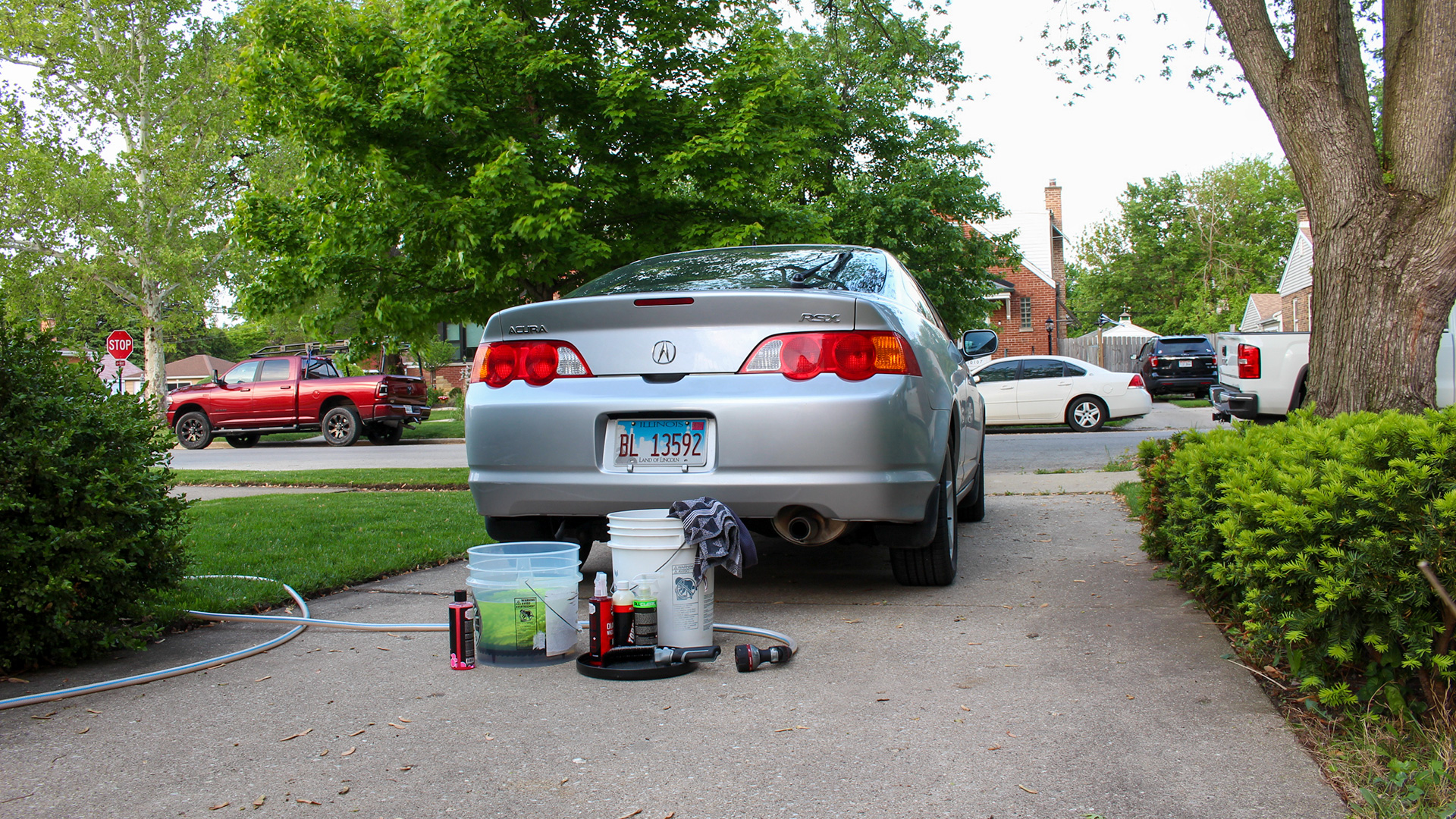

We may earn revenue from the products available on this page and participate in affiliate programs. Learn more ›
I believe in the devil for one reason and one reason only. After seemingly every car wash, the clouds darken, the humidity goes up, and little water bombs drop from the sky. Whether a small sprinkle or a thunder-cracking deluge, it’s like there’s a vengeful deity with a creepy laugh-cackle somewhere controlling the precipitation, Truman Show-style.
This unlucky coincidence used to make me unreasonably angry, but knowing I can easily wash my car again for free at home eases my mind. Washing a car is like a little love peck between partners. You show it attention and care, and it returns the feeling with the warm fuzzies you get from having a long-lasting, great-looking ride.

Everything You’ll Need To Wash a Car
Washing a car is an easy task that should take anywhere from one to three hours depending on how big the car is and how meticulous you are. Preparation will always be the key to completing any job with your car. Gather the items you’ll be using, read our step-by-step guide to make an attack plan, and get after it. Here’s a checklist to make things easy:
Safety First
- There aren’t many safety risks involved in washing your car, but if you’re using chemicals that could irritate your skin, gloves aren’t a bad idea. Oh, and be careful not to powerwash your leg.
Tools and Parts
- Water hose
- Spray nozzle
- Two buckets
- Two dirt traps
- Microfiber car wash mitt
- Microfiber towels
- Two drying towels or a shammy
- Wheel brush
- Car wash soap
- General automotive degreaser
- Wheel cleaner
How To Wash a Car, Step by Step
1. Park in the Shade
It’s best not to wash your car when it is in direct sunlight, so find a shady spot or wait for the sun to go down.
2. Rinse the Car Down

Using a hose and spray nozzle or a pressure washer, spray the car down. Hitting every inch of the vehicle, including the underside and wheel wells, rinse loose dirt off. This will help prevent scratches during the main wash.
3. Wash the Wheels and Tires

Using a microfiber towel, microfiber mitt, and/or wheel brush designated only for your wheels, spray wheel cleaner and rub over the surfaces of the wheel. Make sure to get into the cracks and on the backside of the wheel. Once the wheels are done, spray them down and wash your tires, if you need to.
4. Start Washing the Car in Sections From the Top Down
After your wheels are done, rinse the car down again. At this point, some people choose to use degreaser on spots with bugs or other road films, but it’s not always necessary. Grab your two buckets with dirt traps at the bottom and add your soap directly to your microfiber mitt or into one of the buckets.

Dip your mitt into the first bucket, start washing the car’s roof, and work your way down. Wash the car in sections, and move around the vehicle, rinsing as you go. After each section, dip your mitt into the second bucket to rinse it off, squeeze out the nasty water, then dip it into the first bucket and proceed with the wash. Continue until the whole car is clean.
5. Rinse Again
Once you’ve washed the entire car, rinse the whole thing in water again. In general, try to keep rinsing the car while washing, which is when a friend is helpful.
6. Clean Sills and Jambs
Using a damp microfiber towel, quickly wipe off the dirt inside the car on the door sills, jambs, and bottom edges.
7. Use Two Towels for Drying

I prefer the two-towel method for drying. First, quickly go over the entire car with the first towel to collect a large majority of the water. Second, use the other towel to detail dry and pick up the leftovers.
8. Protect Your Clean
After you wash your car, it’s time for protection. Not everybody details and/or protects their cars, but we highly recommend it. A wax or coating will not only keep the car in good condition for longer, but it will also make future washes even easier.
Video
If the written instructions and pictures weren’t enough, this video from auto detailing and cleanliness experts Chemical Guys should help. Give it a watch.
